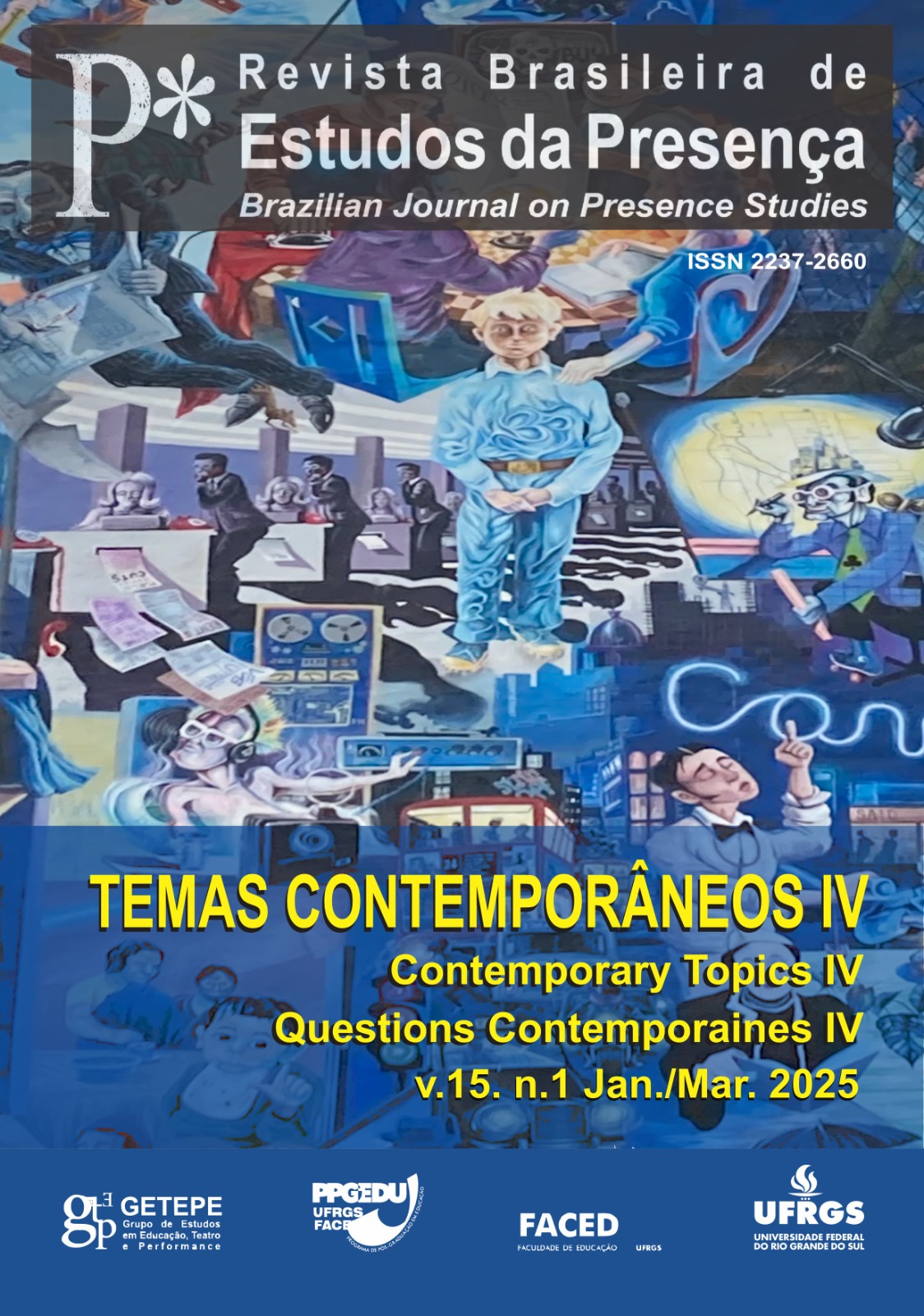Under Penalty of Death:
reveries of justice in Morris and Kieślowski
Mots-clés :
Poetic Reverie, Figural Analysis, Visual Motif, Political Imagination, Effect of PresenceRésumé
The text analyzes the figural aspects of The Thin Blue Line (Morris, 1988) and A Short Film About Killing (Kieślowski, 1988) as reveries of justice driven by the abolitionist imagination of the death penalty. This imagination finds its power in the inviolability of human life as a sense of justice experienced through poetic treatments of the death penalty as a visual motif. The films are approached via a theoretical dialogue between Bachelard’s concept of poetic reverie and Dubois’ Figural question, as they allow us to investigate fiction and documentary as filmic reveries that lead us to a poetic and political experience with the phenomenological world of justice.
Téléchargements
Téléchargements
Publiée
Comment citer
Numéro
Rubrique
Licence
(c) Tous droits réservés Révue Brésilienne d'Études de la Présence 2025

Ce travail est disponible sous la licence Creative Commons Attribution 4.0 International .
Les lecteurs sont libres de transférer, d’imprimer et d’utiliser les articles publiés dans la revue, à condition qu’il y ait toujours une mention explicite à (aux) auteur(s) et à la Revista Brasileira de Estudos da Presença et que le document original ne subisse aucune altération. Tout autre usage des textes doit être approuvé par l’(les) auteur (s) et par la revue. En soumettant un article à la Revista Brasileira de Estudos da Presença, approuvé à la publication, les auteurs acceptent de céder à la revue, sans rémunération, les droits qui suivent : droits de première publication et autorisation pour que la revue redistribue cet article et ses métadonnées aux services d’indexation et de référencement que ses éditeurs jugent appropriés.
 Cette revue utilise une Licença de Atribuição Creative Commons.
Cette revue utilise une Licença de Atribuição Creative Commons.

















